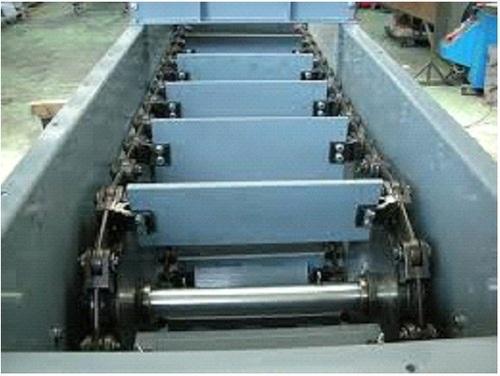- Home Page
- Company Profile
-
Technologies
- Oilseed Preparatory Plants
- Oilseed Extraction Plants
- Crude Oil Filtration Plants
- Edible Oil Refining Plant
- Soya Lecithin Plants
- Conveying Systems
- Plant Heat Exchanger
- Solvent Extraction Plant
- Expander Machine
- Seed Cleaning Machinery
- Distillation Plant
- Bucket Elevators
- Fractionation Plant
- Dewaxing Plant
- Downloads
- Contact Us
Conveying System
100000 INR/Set
Product Details:
- Color Silver
- Usage Industrial
- Pneumatic Conveyor Carries-System
- Voltage 220 Volt (v)
- Click to View more
X
Conveying System Price And Quantity
- 1 Set
- 100000 INR/Set
Conveying System Product Specifications
- Silver
- 220 Volt (v)
- Carries-System
- Industrial
Conveying System Trade Information
- 100 Set Per Month
- 5 Days
Product Description
A conveying system is a mechanical solution used to transport materials or goods from one location to another within a facility or between different points in a production process. It plays a crucial role in various industries, such as manufacturing, logistics, mining, and agriculture, by efficiently moving items, reducing manual handling, and improving productivity. Conveying systems utilize different methods, including belts, rollers, chains, or pneumatic means, to move materials safely and reliably.
FAQs:
Q: What is a conveying system?
A: A conveying system is a mechanical solution designed to transport materials or goods from one place to another within a facility or between different points in a production process. It utilizes various methods, such as belts, rollers, chains, or pneumatic means, to move materials efficiently, reducing manual handling and improving productivity.
Q: How does a conveying system work?
A: A conveying system operates by utilizing a specific method to move materials along a predetermined path. For example, belt conveyors consist of a continuous belt that carries items or bulk materials. Roller conveyors use a series of rollers to transport objects. Chain conveyors employ chains to move products. Pneumatic conveying systems use air pressure to propel materials. The system is powered by motors or air compressors and controlled by sensors or programmable logic controllers (PLCs) to ensure smooth and precise material flow.
Q: What are the advantages of using a conveying system?
A: Conveying systems offer several advantages. They automate material handling processes, reducing manual labor and improving operational efficiency. Conveyors enable the efficient movement of materials, reducing product damage and increasing throughput. They enhance workplace safety by minimizing the need for manual lifting or carrying. Conveying systems also allow for customization, adaptability to different material types, and integration with other equipment or production processes.
Q: Where are conveying systems used?
A: Conveying systems are used in various industries and applications. They are commonly found in manufacturing facilities for transporting components, assembly line operations, and finished products. They are utilized in logistics and distribution centers for sorting, loading, and unloading goods. Conveying systems are also employed in mining and quarrying operations, agriculture for handling crops or feed, airports for baggage handling, and many other industries that require efficient material movement.
Q: Can conveying systems handle different types of materials?
A: Yes, conveying systems can handle a wide range of materials, including solid items, bulk materials, liquids, or gases. They are adaptable to various material characteristics, such as size, weight, shape, and consistency. Conveying systems can be customized with different conveyor types, belt or chain configurations, and material-specific features to accommodate the specific requirements of the materials being transported.
Tell us about your requirement

Price:
Quantity
Select Unit
- 50
- 100
- 200
- 250
- 500
- 1000+
Additional detail
Mobile number
Email
Other Products in 'Conveying Systems' category
"We are looking for Export Inquiries"

 English
English Spanish
Spanish French
French German
German Italian
Italian Chinese (Simplified)
Chinese (Simplified) Japanese
Japanese Korean
Korean Arabic
Arabic Portuguese
Portuguese







